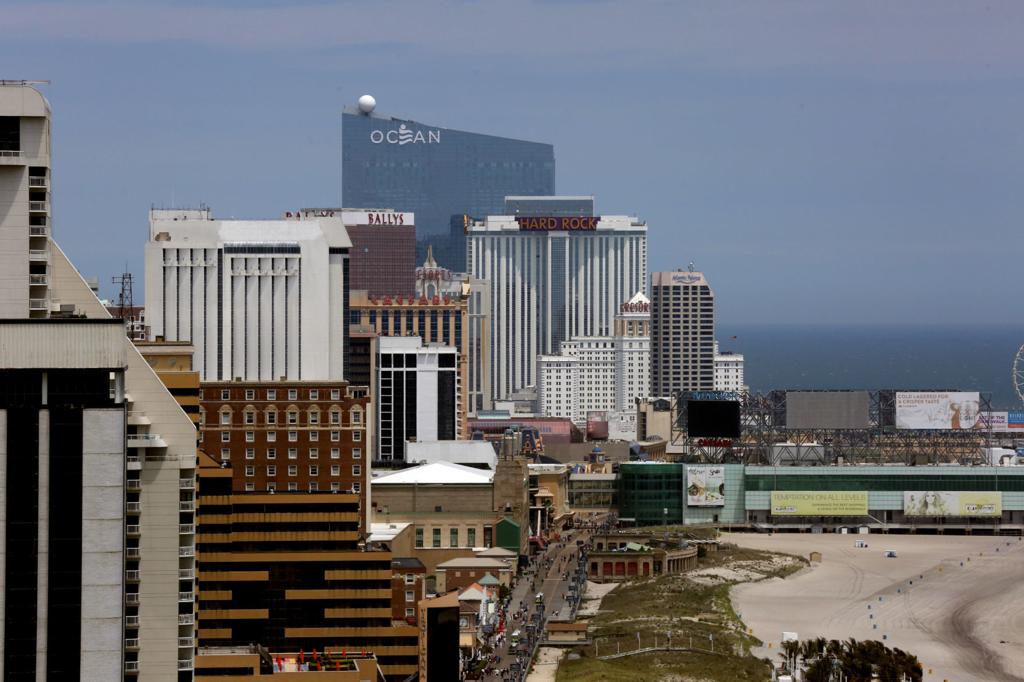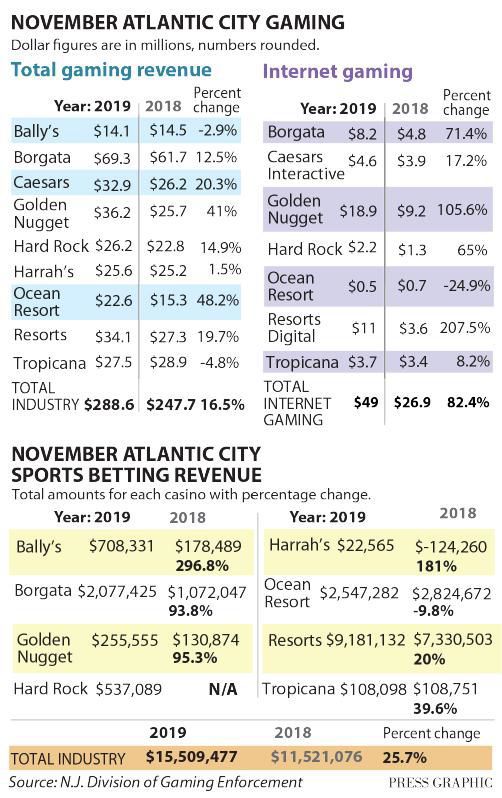Atlantic City Casino Revenue October 2018
Casino win — revenue from slots and table games — generated at the Atlantic City casinos was more than $200.6 million in October, an increase of 8 percent from last year’s $185.8 million. Atlantic City Casino Revenue October 2018, casino santi petri, ordinateur portable casino, craps beginner guide. 30-August 1, 2019. $30 No Deposit Bonus. Atlantic City casinos have released their financial results for October revealing a 19.9% fall in revenue to $209.4 million for October. Breaking the figures down further, slot machine revenue. Two reopened Atlantic City casinos and half a year of sports betting helped push casino revenue up 7.5 percent in 2018 to nearly $2.86 million.
Figures released by New Jersey’s Department of Gaming Enforcement (DGE) announcing its ‘Quarterly and Year-End Results’ for Atlantic City, showed gross operating profits have soared in New Jersey’s Atlantic City during 2017, increasing 22.5% for current operators. The city’s casinos also saw a rise in revenue and hotel occupancy, as they reap the benefits of a less saturated market.
Atlantic City Casino Revenue October 2018 2019


Despite the large increase in operating profits for current operators, the closing of five casinos since 2014, and in particular the closing of the Trump Taj Mahal in October 2016, has led to a far less saturated casino market; the total revenue for the gaming industry in Atlantic City has actually only grown by 0.9%, compared to the 22.5% increase experienced for current operators, to $3.4bn during 2017.
Casinos such as Caesars, the Golden Nugget and Tropicana all performed well as a result of the less competitive market. Whilst the Borgata led the way in achieving a total revenue of $1.1bn, a growth of 3.5%, Caesars and the Golden Nugget both increased their revenues by 7.1%, to $442m and $316m.
Tropicana saw the largest growth to its revenue at 12.3%, up from $435m in 2016 to $489m in 2017. This helped Tropicana to report an impressive 71% annual increase in its gross operating profits profits, up from $53m to $91m by the end of 2017.
The results included a similarly buoyant hotel occupancy rate, which reached an impressive 86.9%. This represented an annual growth of 5.4%. Caesars led the charge in this department recording an average occupancy rate of 91% for the year.
Discussing the successful annual results, Christopher Glaum, deputy chief of financial investigations for DGE, said: “In a positive sign for the Atlantic City casino industry, three casino hotels reported record net revenue and gross operating profit under current ownership and both Internet casino licensees had their best year as well. Industry-wide, strong growth in net revenue led to gross operating profit growth in excess of 20 per cent for the year. These operating results bode well for the industry expansion expected to occur in mid-2018.”
Atlantic City Casinos will be well aware that these results are directly attributed to the closure of 5 casinos in the area since 2014. Therefore, the planned opening on Memorial Day 2018 of a Hard Rock Hotel and Casino, on the site of the old Trump Taj Mahal, could have an adverse effect on the individual casinos performances in future financial reports.
Leaked tax transcripts obtained by the New York Times are painting a clearer picture of the business failures of President Donald Trump during his time as a casino mogul in Atlantic City between 1985 and 1994.
Trump spent months on the campaign trail prior to the election boasting that he “never went bankrupt” and that he emerged from his time in Atlantic City with a profit of $10 billion.

“Atlantic City fueled a lot of growth for me,” Trump said at the time. “The money I took out of there was incredible.”
I have nothing to do with Atlantic City-sold years ago (great timing). For losers and haters, I NEVER went bankrupt. Plus $10 billion, sorry
— Donald J. Trump (@realDonaldTrump) September 13, 2014
In reality, Trump sought bankruptcy protection three times, in 1991, 2006, and again in 2009, and even had to take a $65 million bailout from the state of New Jersey. Another New York Times report from October of 2018 confirmed that Trump needed to sell off his father’s $1 billion New York real estate empire to keep his own casinos afloat.

Recently revealed tax records now show that Trump reportedly lost more than $1.1 billion during that stretch on his projects, which included the Trump Plaza, Trump Castle, and Trump Taj Mahal.
The figures are sobering for those who bought into Trump’s The Art Of The Deal persona. From the New York Times report.
The numbers show that in 1985, Mr. Trump reported losses of $46.1 million from his core businesses — largely casinos, hotels and retail space in apartment buildings. They continued to lose money every year, totaling $1.17 billion in losses for the decade.
Atlantic City Casino Revenue October 2018 Calendar Printable

The report went on to point out that Trump not only lost, but lost more than just about anyone else.
In fact, year after year, Mr. Trump appears to have lost more money than nearly any other individual American taxpayer, The Times found when it compared his results with detailed information the I.R.S. compiles on an annual sampling of high-income earners. His core business losses in 1990 and 1991 — more than $250 million each year — were more than double those of the nearest taxpayers in the I.R.S. information for those years. Overall, Mr. Trump lost so much money that he was able to avoid paying income taxes for eight of the 10 years.